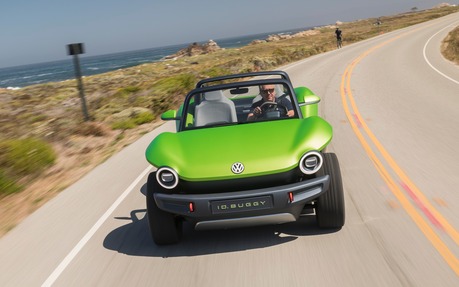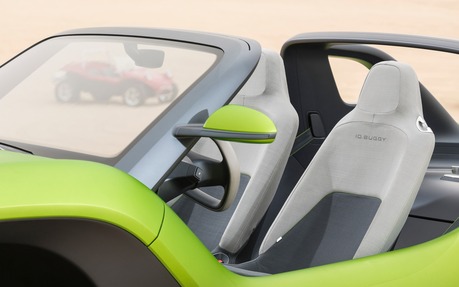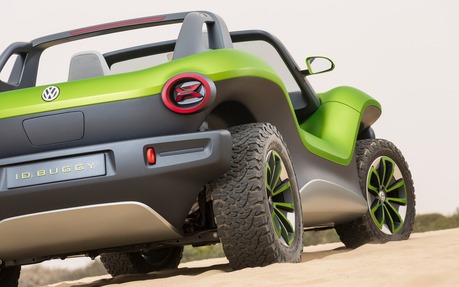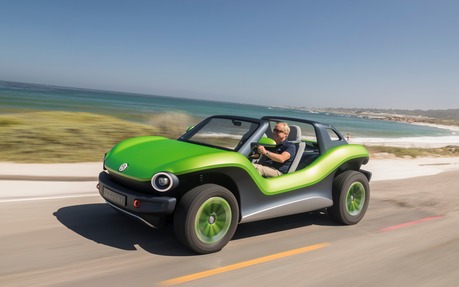Volkswagen ID. Buggy Concept: Driving an Electric Dune Buggy
MONTEREY, California—As part of the festivities surrounding the 2019 Monterey Car Week, Volkswagen gave us the incredible opportunity to test drive its new, zero-emission ID. Buggy, which initially made its debut at the Geneva Auto Show in March.
This one-off concept was hand-built by a small team of 30 people in just a few months, so it’s not like a pre-production model or an advanced running prototype. In fact, we only drove the ID. Buggy on the Monterey peninsula’s 17-Mile Drive at an electronically limited top speed of 50 km/h. That’s why this review will be shorter than most.
- Also: Volkswagen ID. Buggy: A Cute Nod to the Past
- Also: Volkswagen Now Plans to Launch 70 Electric Models in Next 10 Years
The lovable ID. Buggy is sort of a tribute to the famous dune buggies of the 1960s while at the same time showcasing the potential of Volkswagen’s MEB platform, which will underpin many different electric vehicles in the years to come. We had a good look at it in Geneva, but the time we spent in its natural habitat on the California coast helped us better appreciate its unique design and construction.

This small, oddly shaped two-seater is barely four metres long and features a sandwich architecture where the 62-kWh battery and electric motor are both mounted in the floor. Similar to the Beetle-based buggies of the past, the drive wheels are in the rear.
The comparison ends right there, though. From a technical standpoint, the ID. Buggy is light-years ahead with a structure made of aluminum, plastic and steel.
Waterproof Cockpit and XL1 Seats
Since there are no doors or roof panels, the cockpit of the ID. Buggy uses waterproof materials. It is possible to attach a canvas top to the windshield frame and rear tonneau bar, but it wouldn’t really be such a practical solution under the rain.
The interior design is quite minimalist. It comes down to a steering wheel, an instrument panel, a pair of controls on each side of the steering column (the one on the right allows you to shift from Park to either Drive or Reverse) and two pedals.
As for the seats, Volkswagen’s chief concept engineer Dzemal Sjenar confirmed to us that they’re identical to those in the diesel-powered, twin-cylinder XL1 plug-in hybrid car sold in 2013.

Driving Silently
The Volkswagen ID. Buggy starts in complete silence and takes off with remarkable explosiveness. After all, it weighs just 1,500 kilograms and its 201-horsepower electric motor delivers 228 pound-feet of instant torque.
The company says that it can sprint from 0-100 km/h in 7.2 seconds before topping out at 160 km/h. As mentioned earlier, our test drive was limited to speeds of 50 km/h, so we couldn’t validate these numbers. Same thing for the 250 kilometres of range.
Unlike many other concept vehicles we’ve had the privilege of taking for a spin, the ID. Buggy’s chassis felt extremely rigid. It must be real pleasant to drive on actual roads.

More than a Concept?
Volkswagen hasn’t closed the door on a limited production run of the ID. Buggy. If it ever rolls off the assembly line, we’ll be talking about a niche vehicle reserved for a select few.
Based on the enthusiastic reactions of people who turned their heads along the way, the ID. Buggy has the potential to revive a cool era—minus the emissions.

